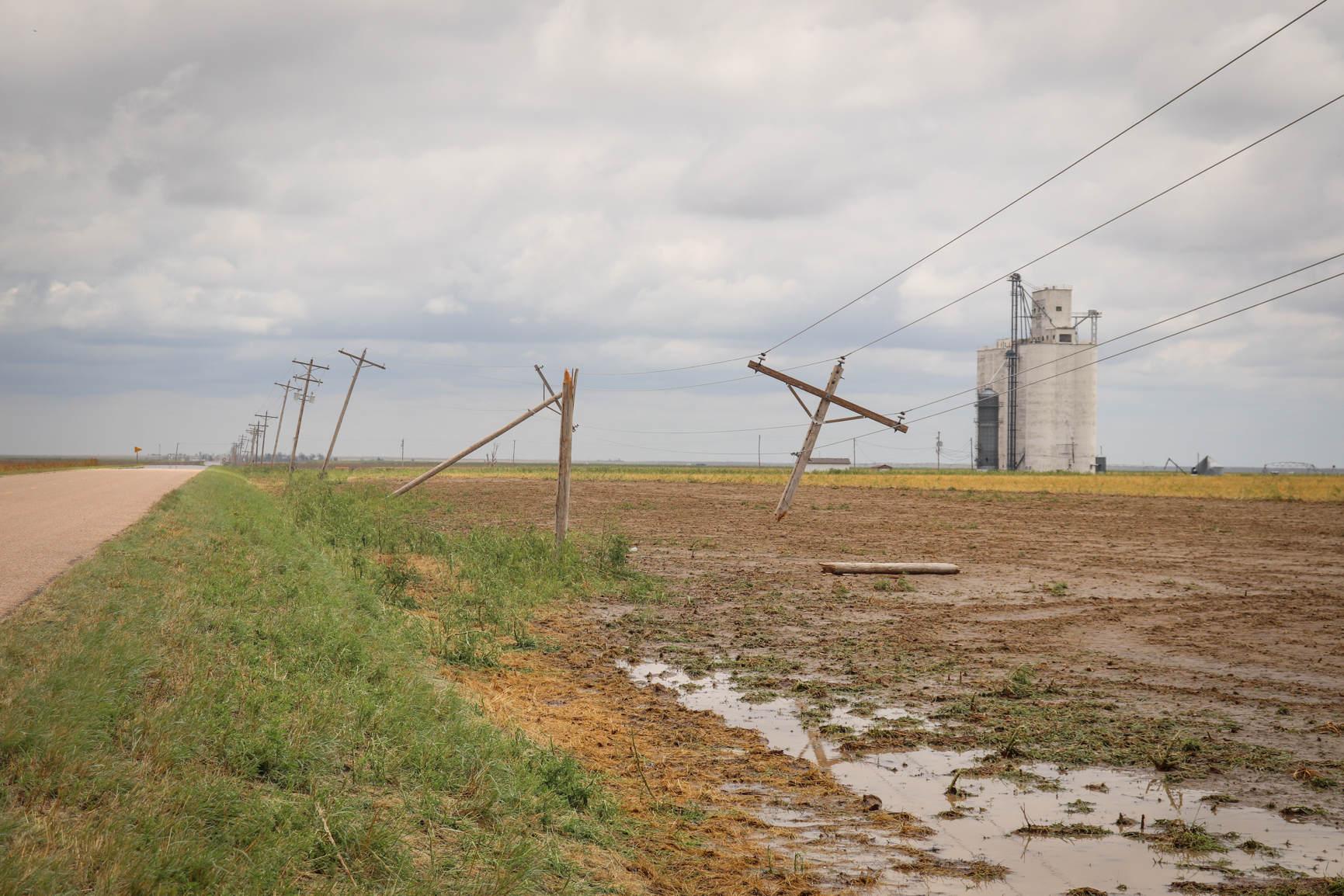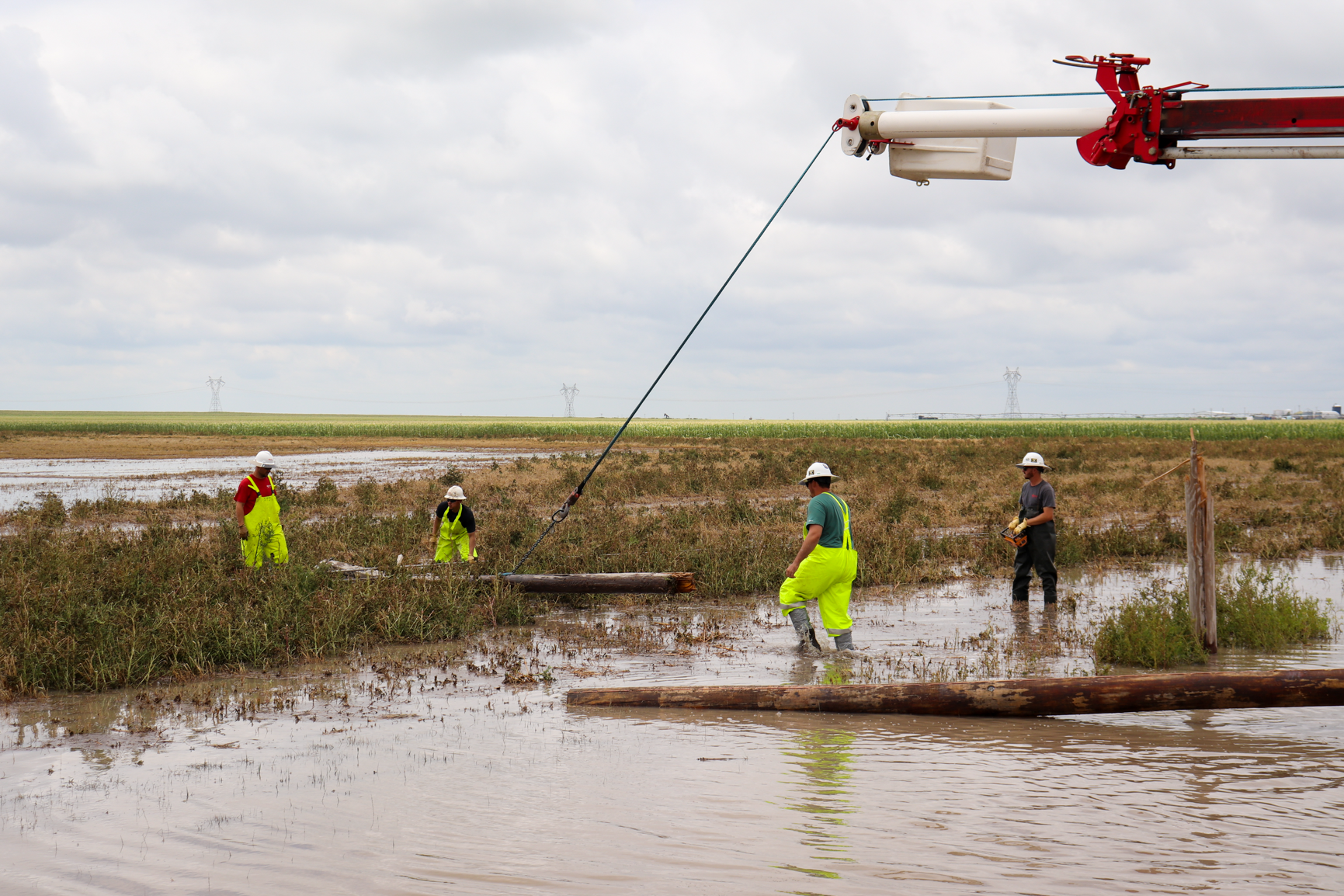While summer brings a lot of fun in the sun, it can also bring severe weather. Summer storms have the potential to produce tornadoes — which can happen anytime, anywhere, and can bring winds over 200 miles per hour.
Mother Nature’s damage to power lines is typically the major cause of most power outages. To avoid falling trees and branches, we work throughout the year — through right-of-way clearing — to ensure power lines across our service territory stand little risk of damage.
When severe weather strikes — including heavy winds, hail, lightning and dust storms — extensive damage to power poles, substations, transmissions lines and other electrical equipment is unavoidable. Widespread damage often means extended power outages are more likely to occur.
That’s why it’s important for all of us — our co-op and members like you — to be prepared.
ON STANDBY
When the power goes out, how do our crews know where to begin restoration? And how do members know if outages have been reported? It all starts with a safe, efficient plan for power restoration.
When the lights go out and it’s safe for our crews to begin the restoration process, they start by patrolling the power lines to assess damage and causes.
Our lineworkers use an advanced metering infrastructure (AMI) system and an updated mapping system to restore power quickly and safely. This process begins with repairs to the main distribution lines serving the largest number of homes and businesses. We still rely on our members to call in information about sparking power lines, broken poles and down wires.
After those repairs are made, crews work on tap lines, which deliver power to transformers, either mounted on utility poles (for above-ground service) or placed on pads (for underground service).
Finally, individual service lines between the transformer and members’ homes and businesses are repaired.
BE PREPARED
We can’t control the weather, but we can prepare for it. WEC keeps a supply of extra utility poles, transformers and other equipment on hand in each community we serve so we can quickly get to work in the event of an outage. When widespread outages occur, multiple crews work simultaneously to repair damage in multiple locations.
Adults understand the importance of storm safety, but younger children and teens may not realize the dangers storms pose. That’s why it’s so important to talk to your family and have a storm plan in place. Here are some tips you can share with your loved ones.
BEFORE THE STORM
- TALK TO YOUR FAMILY ABOUT WHAT TO DO IN THE EVENT OF A SEVERE STORM OR TORNADO. Point out the safest location to shelter, like a small, interior, windowless room on the lowest level of your home. Discuss the dangers of severe thunderstorms; lightning can strike 10 miles outside of a storm. Remember: when you hear thunder roar, head indoors.
- MAKE A STORM KIT. It doesn’t have to be elaborate — having a few items on hand is better than nothing at all. Include items like water, non-perishable foods, a manual can opener, a first-aid kit, flashlights and extra batteries, prescriptions, baby supplies and pet supplies. Keep all the items in one place for easy access if the power goes out.
DURING THE STORM
- PAY ATTENTION TO LOCAL WEATHER ALERTS — either on the TV, your smartphone or weather radio — and understand the types of alerts. A thunderstorm or tornado watch means these events are possible and you should be prepared; a warning means a thunderstorm or tornado has been spotted in your area and it’s time to take action.
- IF YOU ARE IN THE PATH OF A TORNADO, HEAD TO YOUR SAFE PLACE TO SHELTER. Protect yourself by covering your head with your arms or materials like blankets and pillows.
- IF YOU’RE DRIVING DURING A SEVERE STORM OR TORNADO, DO NOT TRY TO OUTRUN IT. Pull over and if possible cover your body with a coat or blanket.
AFTER THE STORM
- IF THE POWER IS OUT, CONSERVE YOUR PHONE BATTERY. Limit calls and texts to let others know you are safe or for emergencies only.
- STAY OFF THE ROADS IF TREES, POWER LINES OR UTILITY POLES ARE DOWN. Lines and equipment could still be energized, posing life-threatening risks to anyone who gets too close.
- WEAR APPROPRIATE GEAR WHEN CLEANING UP STORM DEBRIS. Thick-soled shoes, long pants and work gloves will help protect you from sharp or dangerous debris left behind. Summer is a time for many fun-filled activities, but the season also brings severe, dangerous weather, so talk to your loved ones about storm safety so that everyone is prepared.
Though Mother Nature can be unpredictable, as a member of WEC, be assured that we’re standing by, ready to restore power as quickly and safely as possible!
Do you know what to do around downed power lines?
Protect yourself and your loved ones by watching our one-minute video!
HOW TO REPORT AN OUTAGE: If you experience a power outage, don’t assume a neighbor reported it. It’s best to report the outage yourself. During business hours, call your local WEC office or use our outage reporting hotline after hours, on holidays and weekends: 1-800-ON-AGAIN (1-800-662-4246).
View our live outage map at for updates. Updates for large or widespread outages are also posted to our Facebook page. Do not report outages on Facebook. You must call to report your outage. After reporting, follow us on Facebook to stay up to date!




